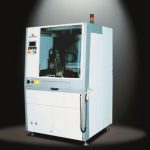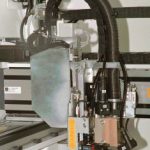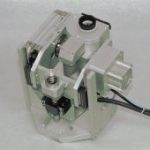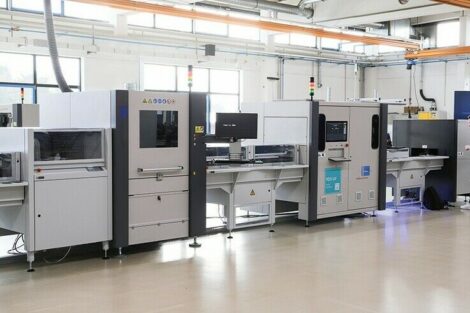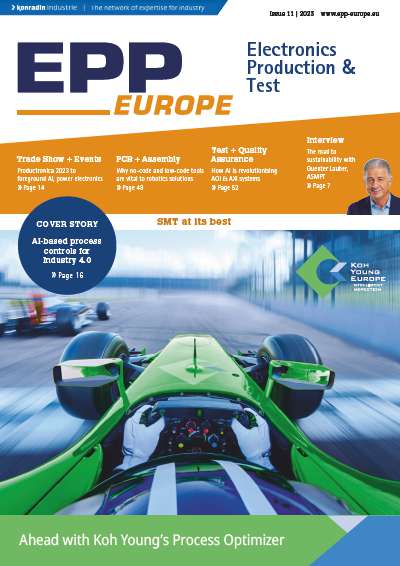The issue of whether to automate the depanelling procedure or not is a question that every board assembler faces when determining how to optimize the production processes and to enhance efficiency. While such a concept has been developed already for years, it has only recently been the trend embraced as a viable approach for PCB singulation.
Juha Hänninen, JOT Automation, Oulu, Finland
In general, the level of manufacturing automation is always determined by labor costs and the suitability of a process step. However, direct cost-based calculation does not always lead to optimal solutions. When compared with manual work, automated practice provides obvious benefits such as increased board and process qual-ity, reduced waste and higher through-put. Automation allows detailed control of processes and their impacts on the overall production flow. Equipment uptime may become higher and the number of process-related quality flaws may diminish. The incentive to automate certain tasks may also be due to ergonomic reasons.
Based on our wealth of experience with many manufacturers, a trend to automate the depanelling process is clearly notice-able. Depanelling automation is more and more taken into consideration when excess labor is being used to singulate PCBs by hand. For many companies, excess labor may be as little as two or three workers doing nothing but manually separating boards from finished panels. Cutting tabs by hand with dikes or nibblers is a tedious task, which quickly becomes tiresome. Additional handling during depanelling inevitably leads to increased scrap levels, especially on higher value-added assemblies later in the line. In most cases, manufacturers tend to automate the process in order to satisfy edge quality requirements and also to preserve dimensional tolerances.
Fixturing – secure grasp is important
Depanelling based on routing technology offers higher flexibility, speed and accuracy, and edge quality realized is superior compared to alternative methods. The cutting force does not harm the PCBs and the number of rejects is kept very low. Also the initial costs of a routing system are moderate, and product-specific parts represent only a small ongoing expense. Due to the advantages, routing is generally chosen for demanding commercial and industrial production. Other, more technical issues, which must be taken into consideration when using routers, are fixturing (product-specific parts), dust removal, vibration, static charge/discharge and tab cutting versus full-profile routing.
Due to forces imparted during routing, the individual board within the panel must be held firmly in place by a fixture or gripper mechanism. The simplest and least expensive way to do this is by pinning internally to at least two non-plated holes on each panel. When pinning is not an option, vision system technique can also be used to verify the panel/ PCB location. In this way, the routing procedure is not related to typically product-specific holes, and the machine can be run without changes between different production batches.
ESD control, dust removal and vacuum levels
Dust removal is one of the most important issues. On most machines the router bit is surrounded by a vacuum foot, which usually holds a bit-concentric router brush. An up or down operating chip-breaker routing-bit is commonly used to draw the cuttings into the vacuum airflow. In most tab-cutting or even full profile applications, this configuration is sufficient to remove all dust and is also part of a whole particle evacuation system.
Regarding the dust evacuation, normally many people including router manu-facturers are thinking only of a vacuum pump and its capability to create a strong air-stream level. But this is only half of the truth. The critical point of a vacuum pump is to maintain a sufficient or maximum airflow – not depending on how long the pump had been used or how many particles are in the container. With normal dust bag systems it is not possible to realize continuous vacuum levels, as it is a fact that the airflow level will drop dramatically when the bag is filled or filters become dirty, respectively. Full ESD control is very important when thinking of damages to components and final assemblies. Static charge, generated by router-bits cutting material and vacuum airflow, is localized phenomenon. Therefore, this is usually managed by the use of conductive materials, ionized air and by adding a braided copper ground cable to the inside of the vacuum hose in order to provide a way to minimize the charged energy. But even more troublesome is the attraction of dust particles when static charge is present. And this will cause malfunctions of assemblies, or additional cleaning process will be needed in the line. It is obvious that this cannot be a satisfactory solution, so integrated ESD control is vital. Dust evacuation should be understood as a single process, which includes elements like routing bit, ESD control, vacuum pump and the routing parameters. If one of these factors fails, it is impossible to get the maximum performance from such a particle-management process. The result will be as poor as the weakest link allows.
A much less common consideration is the vibration effect of routing on sensitive or delicate components. All kinds of vibration will directly affect the lifetime of a routing bit. This is not a big issue from an economical point of view, but rapid wearing of these tools will decrease the routing quality dramatically. And the quality of the final assembly is of course a very big issue.
Most vibration can be avoided by using rigid fixturing for gripping. Alternatively, the use of differently styled router bits as well as altering spindle speeds and feed rates may enable a shifting of router resonant frequencies out-of-phase with component resonant frequencies.
Stand-alone versus in-line operation
Once the user has chosen routing as the most suitable depanelling method, the next step is to determine how the anticipated future requirements will be satisfied the best way. Options are stand-alone, manually loaded router or automated in-line routing systems.
In the recent past, the choice was relatively straightforward. Stand-alone, manually loaded routers were commonly used in medium-volume, high product-mix applications. Product changeover could be accomplished within seconds by simply lifting out the fixture, placing another fixture into the machine, and accessing the previously stored routing program from a menu. By comparison, automated in-line routing systems were used in high-volume, low or no-mix applications. In most cases, this pattern will continue, although recent advances in handling automationwill allow a greater flexibility to imple-ment in-line solutions in higher mix applications.
Optimizing productivity
Globally acting customers are demanding flexible automation and robotic gear that can enhance manufacturing productivity. Their specific requirements include speed, flexibility, ease-of-use, reliability, availability and affordability of the equipment. Based on our experience, many customers prefer those solutions as opposed to highly complex, expensive systems, requiring frequent maintenance. Our approach to depanelling is especially targeted to fulfill even upcoming requirements. Our equipment consists of standardized, reliable and cost-efficient units that provide short ramp-up, secured by approved technology. The product portfolio provides adequate answers for all levels of automation. The FlexiRouter is an upgradeable generic basic router for medium-volume, high-mix environments. The In-line router is focused on high-volume production. As flexibility is a built-in feature in our equipment, we can provide customized and optimized solutions whereby utilizing all the advantages of standard units. To assure efficient operation, many options are available. The routers can be equipped with various grippers (programmable servo and pneumatic multi-gripper units). For larger work cells, there is also a gripper magazine available. For operating within tight tolerances and the verification of positions, machines can easily be equipped with a vision system. Additionally, graphical user interface, video-aided programming, automatic tool change and motorized width adjustment are also available.
As with any other technology where dif-ferent choices exist, process engineers and production managers have to determine what solution is appropriate to their application needs. While older techniques may offer an initial cost advantage over routing, the issues of quality, speed, flex-ibility and overall reliability continue to drive the routing process. As OEM and EMS-companies continue to increase the sophistication level of boards, these considerations become ever more important.
Zusammenfassung
Leiterplatten und auch kleinere Baugruppen werden oft aus wirtschaftlichen Gründen im Nutzen gefertigt. Sie müssen in der Fertigung aus den großen Panels herausgelöst werden. Diese Vereinzelung kann sowohl manuell als auch unter einer Reihe von wichtigen Aspekten wie Arbeitssicherheit, Effizienz, Qualität und Zuverlässigkeit automatisch erfolgen. Die Automatisierung bietet hier erhebliche Vorteile.
Résumé
Pour des raisons économiques, les cartes imprimées et les petits modules sont souvent fabriqués dans le flan et doivent être séparés des grands panneaux durant la fabrication. Cette séparation peut être effectuée manuellement ou de manière automatique en considérant une série d’aspects importants comme la sécurité au travail, l’efficacité, la qualité et la fiabilité. L’automatisation est source d’avantages considérables.
Sommario
Per motivi di economicità, sia i circuiti stampati che anche i gruppi costruttivi di piccole dimensioni vengono prodotti in blocchi. Durante la produzione essi devono essere staccati dai pannelli di grandi dimensioni. Tale singolarizzazione, per quanto riguarda importanti aspetti quali la sicurezza di funzionamento, l’efficienza, la qualità e l’affidabilità, può avvenire sia in maniera manuale che anche in maniera automatica. L’automatizzazione offre qui notevoli vantaggi.
Share:


